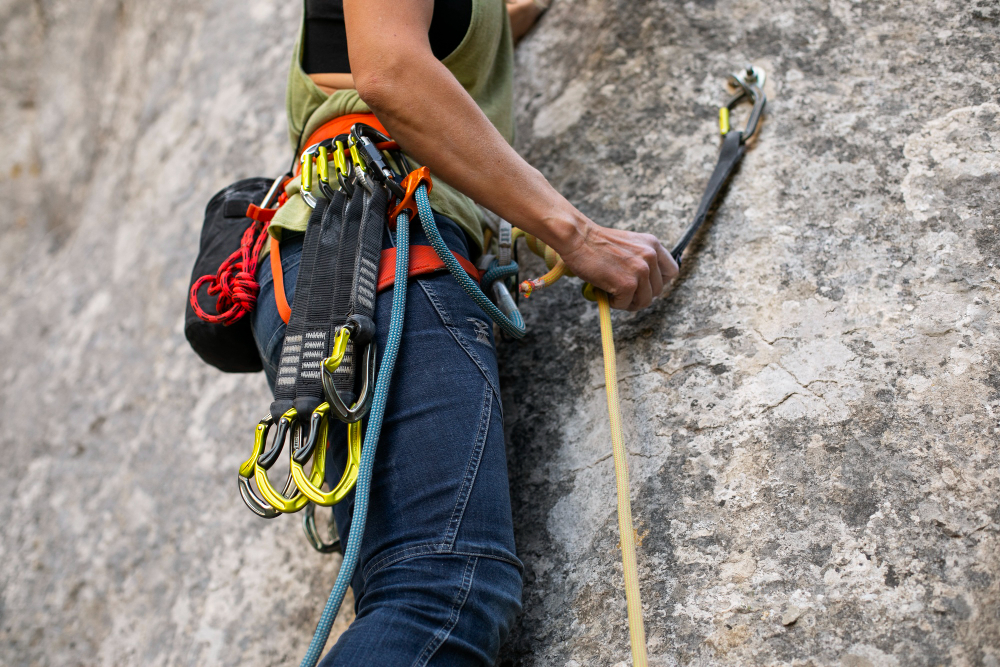Rock climbing is not just a physical activity but also a fashion statement. The right attire can make all the difference between a comfortable, enjoyable climb and a frustrating, restrictive one. Whether you’re a seasoned climber or a novice adventurer, choosing the appropriate clothing and gear is essential for safety, performance, and style on the rock face.
Key Considerations
When it comes to rock climbing attire, functionality should always take precedence over fashion. Climbers need clothing that allows for freedom of movement, breathability, and durability to withstand the rigors of the sport. Look for lightweight, moisture-wicking fabrics that provide ample stretch and flexibility without restricting movement. Additionally, consider the weather conditions and terrain of your climbing destination when selecting attire, as weather-resistant layers and protective gear may be necessary for outdoor climbs in varying climates.
Finding the Perfect Balance
For tops, climbers have a range of options to choose from, including moisture-wicking t-shirts, breathable tank tops, and long-sleeve performance shirts. The key is to strike a balance between comfort, mobility, and protection. Opt for tops with flat seams and articulated designs to minimize chafing and irritation during repetitive movements. Consider layering with a lightweight jacket or windbreaker for added warmth and protection against the elements in cooler climates.
Mobility and Flexibility
When it comes to bottoms, climbers should prioritize mobility and flexibility to navigate challenging routes with ease. Look for pants or shorts made from stretchy, quick-drying fabrics that allow for unrestricted movement and ventilation. Climbing-specific pants often feature reinforced knees and seat areas for added durability and protection against abrasions. For warmer climates, breathable shorts or capris can provide comfort and ventilation without sacrificing performance.
The Foundation of Climbing
Footwear is arguably the most crucial piece of gear for rock climbers, as it directly impacts performance, grip, and safety on the rock face. Climbing shoes should fit snugly without causing discomfort or pressure points, providing a secure fit and maximum sensitivity for precise footwork. Choose shoes with sticky rubber soles and downturned profiles for optimal grip and traction on steep or technical terrain. Additionally, consider the type of climbing you’ll be doing—whether bouldering, sport climbing, or trad climbing—and select shoes tailored to your specific needs and preferences.
Essential Extras
In addition to clothing and footwear, climbers should invest in essential accessories to enhance comfort and safety during climbs. A lightweight, breathable chalk bag and chalk ball or loose chalk can help absorb moisture and improve grip on holds. Fingerless climbing gloves can provide protection against blisters and abrasions while maintaining dexterity and sensitivity for intricate movements. And don’t forget to pack a durable backpack or gear bag to carry essentials such as water, snacks, and climbing gear.
Harnesses and Helmets
Safety should always be the top priority when rock climbing, and proper safety gear is essential for protecting against falls and injuries. A well-fitting climbing harness is a must-have for securing climbers to ropes and anchor points, providing support and protection during ascents and descents. Look for harnesses with adjustable waist and leg loops for a personalized fit, as well as gear loops and attachment points for carrying essential climbing gear. Additionally, wearing a helmet is crucial for protecting the head from falling debris and impact during climbs, especially on multi-pitch routes or in areas with loose rock.
Climbing in Style and Safety
Rock climbing is not just a sport—it’s a lifestyle, and your choice of attire reflects your commitment to both style and safety on the rock face. By selecting clothing and gear that prioritize comfort, mobility, and protection, climbers can enhance their performance and enjoyment of the sport while minimizing the risk of accidents and injuries. So whether you’re scaling a towering peak or tackling a challenging boulder problem, dress the part and climb with confidence, knowing you’re equipped for success in style and safety.
